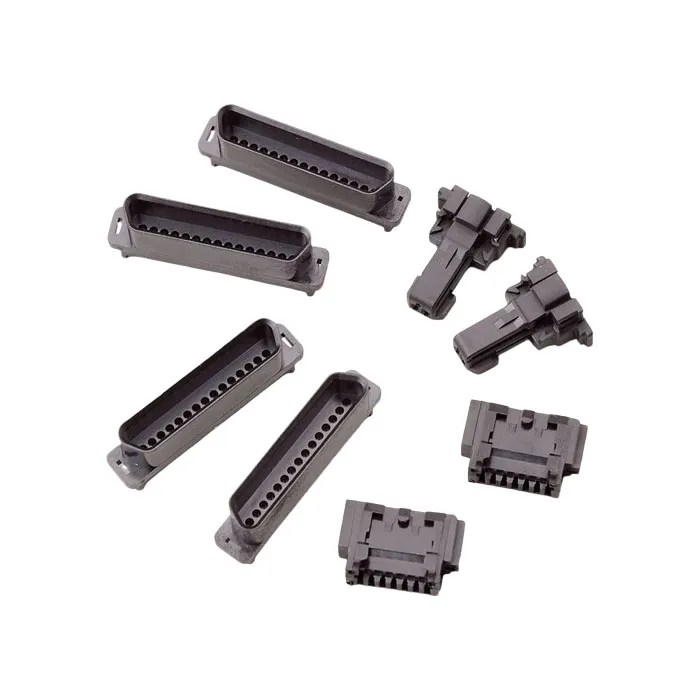Injection molding has become a cornerstone of modern manufacturing, particularly in the plastic industry. Its ability to produce high volumes of intricate components with remarkable precision has made it a preferred choice for various applications, from consumer goods to automotive parts. However, like any manufacturing method, injection molding comes with its own set of advantages and disadvantages. We will delve deeper into both sides, helping you make an informed decision regarding your manufacturing needs.

Before exploring its pros and cons, it's essential to understand what injection molding is. The process involves injecting molten plastic into a mold cavity, where it cools and solidifies to form the desired shape. This method allows for the creation of complex geometries that are often difficult to achieve with other manufacturing techniques.
Advantages of Injection Molding
1. High Efficiency and Speed
One of the most significant advantages of injection molding is its speed and efficiency. Once the initial mold is created, the cycle time for producing each part can be as short as a few seconds. This efficiency makes it possible to produce large quantities of parts in a relatively short timeframe, making injection molding particularly advantageous for high-volume production runs.
2. Precision and Consistency
Injection molding is renowned for its ability to produce parts with tight tolerances. The process ensures that each part produced is nearly identical, minimizing variations in dimensions. This consistency is critical for applications that require parts to fit together seamlessly, such as in assemblies and machinery.
3. Complex Geometries and Design Flexibility
Injection molding allows for the production of complex shapes and intricate designs. The method can accommodate various features such as undercuts, threads, and fine details that would be challenging to achieve with other processes. This design flexibility is invaluable for product development, enabling designers to innovate without significant constraints.
4. Material Variety and Properties
A wide range of materials can be utilized in injection molding, including various thermoplastics, thermosetting plastics, and composite materials. This variety enables manufacturers to select materials based on specific properties such as strength, flexibility, chemical resistance, and heat tolerance. The ability to tailor material choices to meet project requirements adds to the versatility of injection molding.
5. Reduced Waste and Environmental Considerations
Injection molding is a material-efficient process. The excess plastic produced during the injection process can often be regrind and reused, minimizing waste. Additionally, advancements in technology have led to the development of more sustainable materials and processes, making injection molding a more environmentally friendly option compared to some traditional manufacturing methods.
1. High Initial Costs
One of the main drawbacks of injection molding is the high initial cost associated with creating molds. Molds are custom-designed for each specific part, and the design and fabrication process can be expensive and time-consuming. For small production runs or one-off prototypes, these costs may outweigh the benefits.
2. Long Lead Times for Mold Production
The time required to design and produce molds can be significant, often taking several weeks or even months. This lead time can delay the time-to-market for new products, which can be a critical factor in fast-paced industries where speed is essential for maintaining a competitive edge.
3. Limited Flexibility for Design Changes
Once a mold is created, making changes to the design can be challenging and costly. Significant alterations often require the creation of a new mold, which can add to the overall project timeline and expenses. This limitation makes it crucial to finalize designs before commencing production.
4. Material Constraints
While injection molding accommodates a wide range of materials, not all plastics are suitable for this process. Certain materials with high melting points or specific chemical compositions may present challenges during manufacturing. Manufacturers must carefully select materials to ensure compatibility with the injection molding process.
5. Potential for Defects
Despite its precision, injection molding is not immune to defects. Issues such as warping, sink marks, air traps, and flow lines can occur, potentially compromising the quality of the finished product. Addressing these defects may require additional time and resources for quality control, impacting overall production efficiency.
Injection molding is a powerful manufacturing technique that offers numerous advantages, particularly for high-volume production of complex plastic parts. Its efficiency, precision, and versatility make it an appealing option for various industries. However, it is essential to weigh these benefits against the potential drawbacks, such as high initial costs and limited design flexibility.
Ultimately, the decision to use injection molding should be based on careful consideration of your specific needs, production volume, budget, and timeline. By understanding both the advantages and disadvantages of this method, you can make an informed choice that aligns with your manufacturing goals. Whether you’re a small startup or an established corporation, assessing your options in the context of your unique requirements will guide you toward the most suitable manufacturing solution.
Dongguan Xuan Pin Mould Technology Co., Ltd., established in 2013, is a precision mould manufacturer with over 10 years of history. We specialize in LED lead frame molds, IC packaging molds or IC lead frame molds, optical molds, connector molds, and high-precision mold components. We’re proud of our top-notched multi-cavity molds, it can up to 5760 cavities currently. Learn more about what we offer by visiting our website at https://www.xpmold.com. For questions or support, contact us at Lily@xpmold.com.
